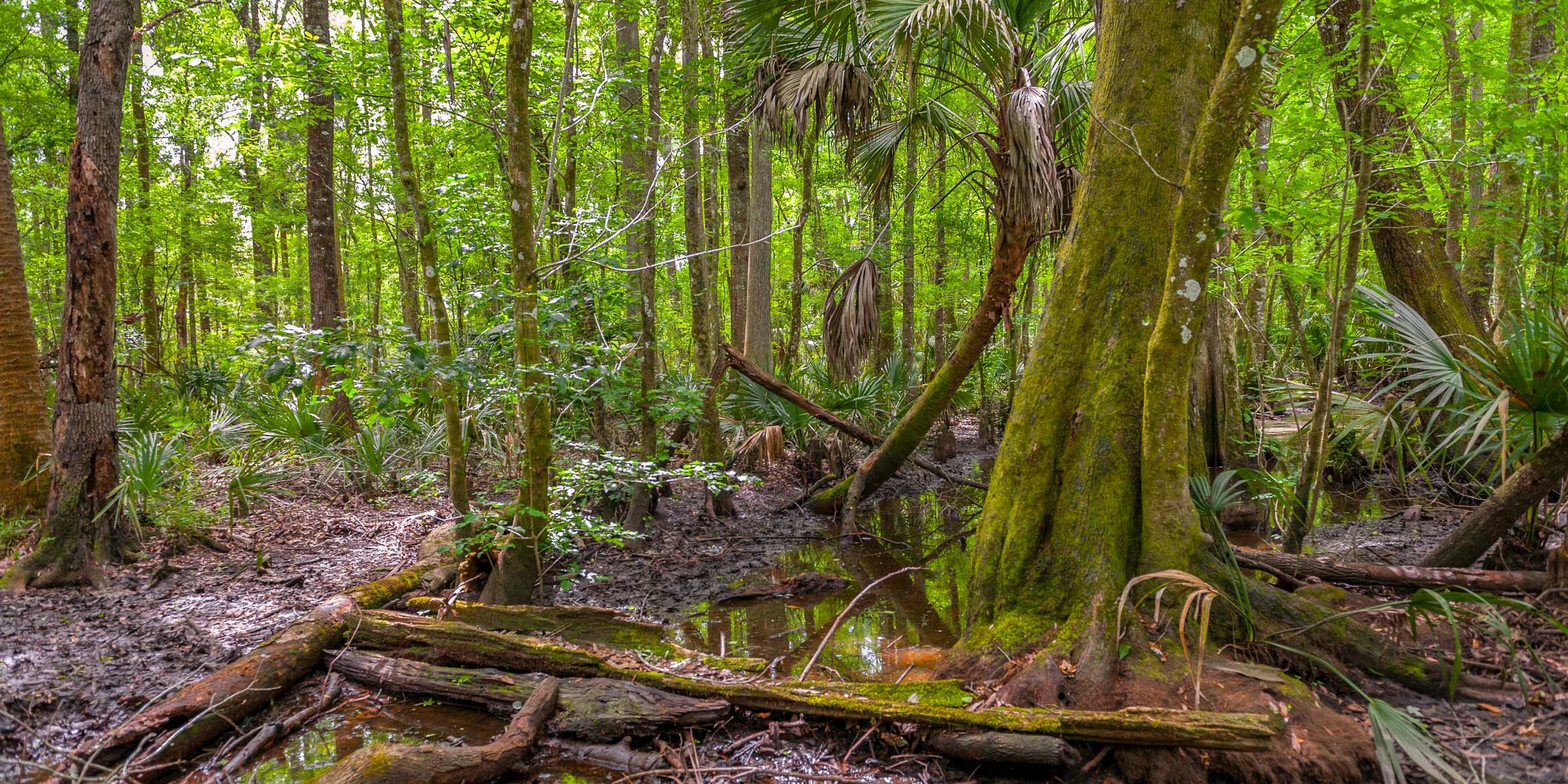
Silver Springs Forest Conservation Area
Teams of biologists, environmental scientists and land managers survey District lands to tailor management plan.
In this place where the sultry air hangs thick and the sun struggles to penetrate the hardwood canopy overhead, the only sound is the staccato percussion of a nearby woodpecker. Oh, and a group of chipper biologists chatting and unloading their equipment — handheld nets, binoculars, waders and notebooks — eager to explore this sultry corner of Florida where critters squirm, sting and bite.
Sarah Tobing, a land resource specialist, and Jeremy Olson, a land manager with the St. Johns River Water Management District, assembled this band of experts to conduct what is known in the vernacular as a “bio blitz,” an inventory of the plants and animals at Silver Springs Forest Conservation Area.
Three years ago, the District teamed up with the Florida Department of Environmental Protection (DEP) and the Conservation Trust for Florida (CTF) to purchase this 4,900-acre mosaic of forests, wetlands and creeks. Their collective vision was to preserve the land as a buffer and clean the streams flowing into the Silver River. What’s more, the land protects the headwaters of Half Mile Creek and an unnamed tributary that flow into the Silver and Ocklawaha rivers, which are designated as Outstanding Florida Waters.
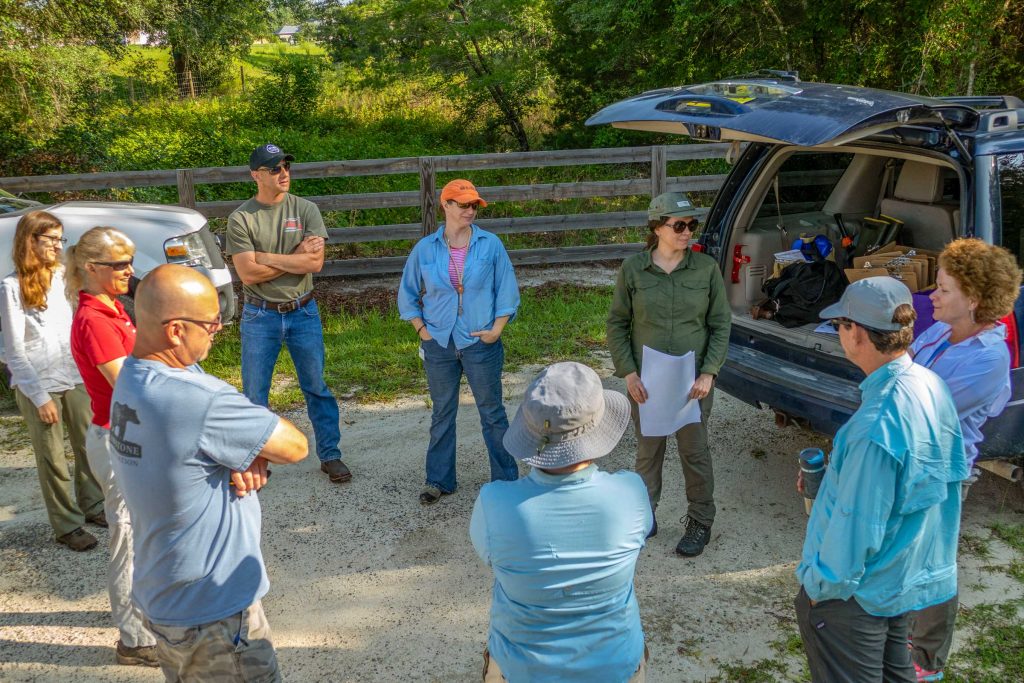
On this day, the District biologists are poking through brush, netting fish from creeks, snapping pictures of butterflies and water beetles, or plucking plants to catalogue everything that coexists in this protected Florida wilderness. The information is vital to the District’s development of a long-term management plan for the property.
“We want to know what’s here to be certain our agency manages the property in a way that is beneficial for all species living here,” Tobing says. “For example, plant and animal surveys might reveal the presence of a federally listed endangered or threatened species. Such a discovery may dictate that we manage a portion of the property to meet the specific needs of that plant or animal.”
Plus, an inventory just makes good sense. Managing the land without a solid management plan would be like running a library without knowing which books are on your shelves.
Tobing and Olson brief their fellow experts and they break into three groups. One group focuses primarily on botany; another, fish and herpetology (the branch of zoology concerned with amphibians that include frogs, snakes, salamanders); the third opts for plants and birds.

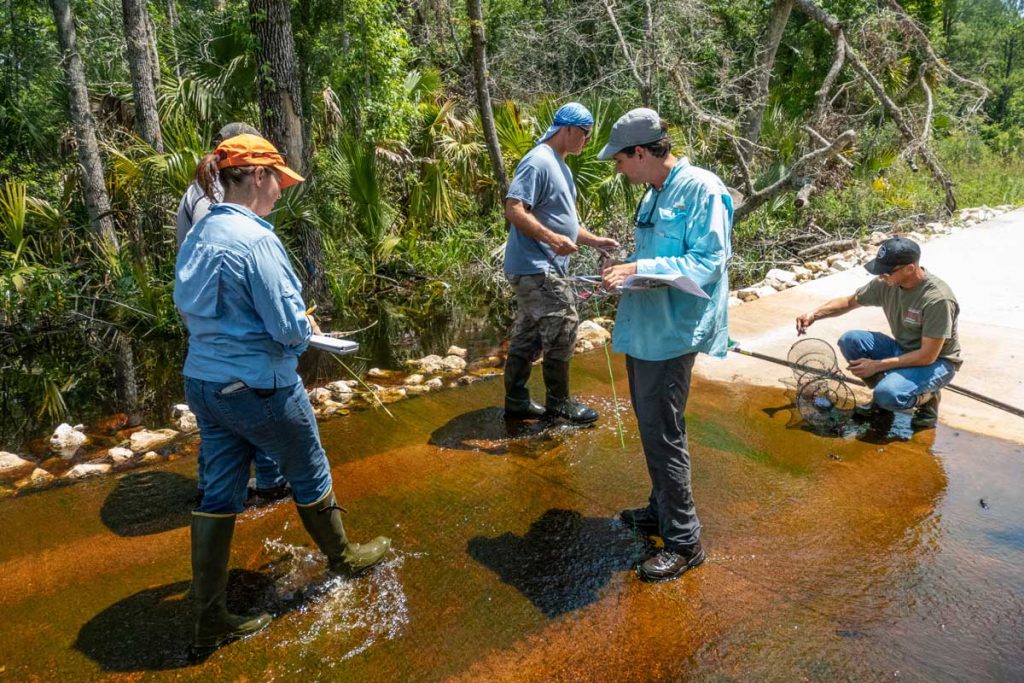
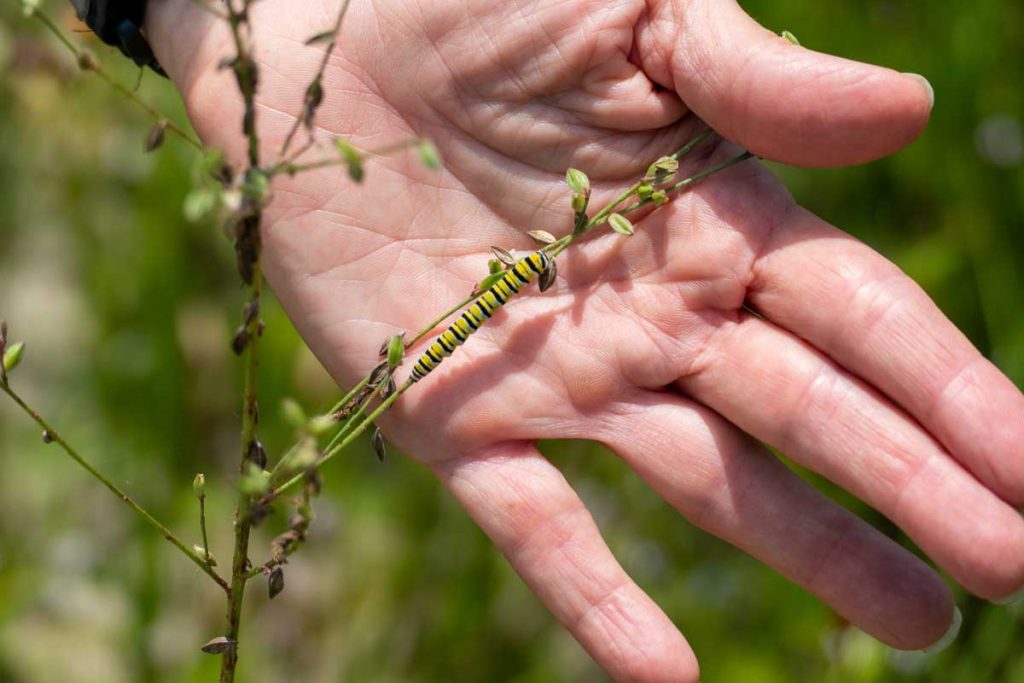
It’s an eclectic mix of land managers and biologists, and their interests and fields of expertise run the gamut. Land Manager Graham Williams can identify birds by sound. Then there’s Land Program Manager Brian Emanuel, whose comfort zone includes chasing after spiders and snakes.
“Really, all three groups are tracking everything out here,” Tobing says. “Everyone here is an expert in a particular topic, but they know a lot about other things. (Environmental Scientist) Kim Ponzio knows her plants, but she’s also good at identifying butterflies.”
A day earlier, Land Resources bureau staff positioned mesh traps to capture fish and other creatures in one of the hardwood swamps. Herpetology team members spill out of their truck, drop the tailgate and grab wading boots, nets, coolers, backpacks, bug spray and sunblock. They’re also armed with a portable library of plant and animal field guides and iPads that spit out limitless information.
The search is on. Olson, the property’s land manager, finds an ornery crayfish in a trap submerged in the swamp. Emanuel, meanwhile identifies a spotted sunfish…or is it a pirate perch? His other catch: a black water beetle about the size of a cigar.
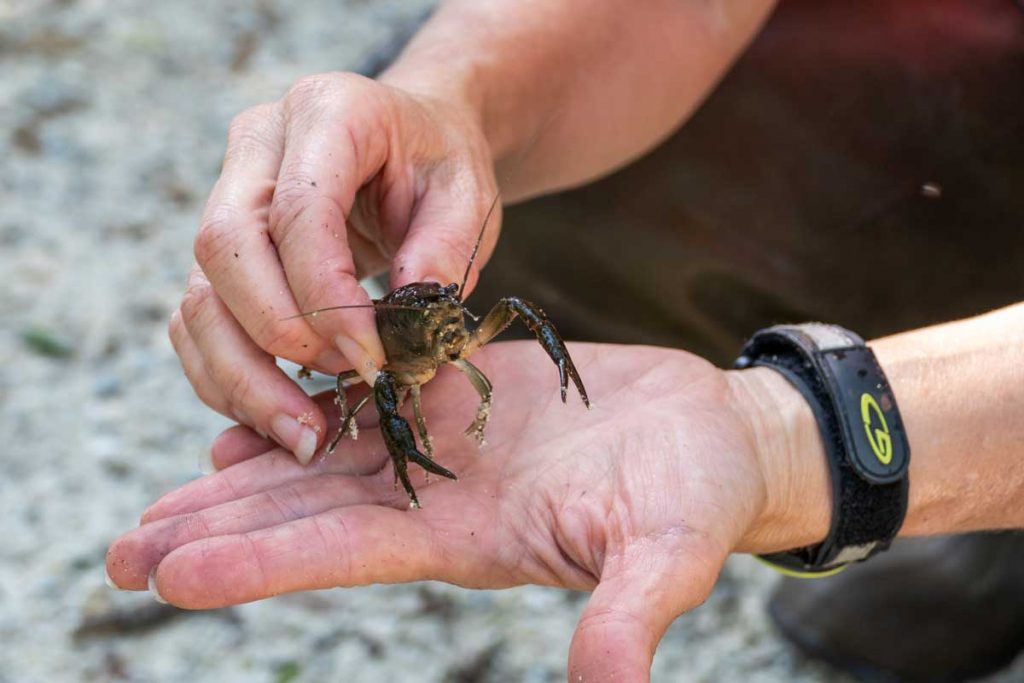

A few yards away, Ponzio calls out the names of ferns, trees, grasses and even ragweed to Environmental Scientist Jodi Slater, who scribbles them down on a data sheet, adding to her growing list of species.
“Gelsemium sempervirens,” Ponzio says, pointing to a fragrant yellow flower sunning itself at the edge of the swamp. “The Carolina jessamine.”
A few minutes later, Ponzio shows Emanuel a millipede that’s scrambling for cover in the leaves. Emanuel snatches up the squirming critter for a closer look and gives it a sniff.
“These millipedes emit a smell,” he says. “It smells like almonds or Amaretto.”
At times, discoveries dissolve into friendly debates over species names. Listening to the scientists debate a name in both layman’s terms and scientific nomenclature is akin to hearing them bounce between English and a foreign language. Which, in a sense, it is, since the names are based on Latin.
Over the next several hours, the groups identify more than 100 animals — several species of butterflies and fish, a water moccasin, insects and more than 200 plant species.
“I’ve identified 31 species of birds so far, mostly by ear, and seen about a half-dozen,” Williams says. “The birds are most active early in the morning. It has quieted down a bit.”
By afternoon, the teams are packing it in, but they’ll likely return in the fall.
“We’ll have to come back in the cooler weather when different plants are blooming, making them easier to identify,” Tobing explains. “Only certain plants are blooming this time of year.”
When complete, the gathered data will be incorporated in the management plan for Silver Springs Forest Conservation Area, serving as a vital tool to ensure that the property will be managed and protected to its fullest potential for generations to come.
For more information about this property visit www.sjrwmd.com/lands/recreation/silver-springs.
This article originally appeared in the fall edition of StreamLines (October 2018).

